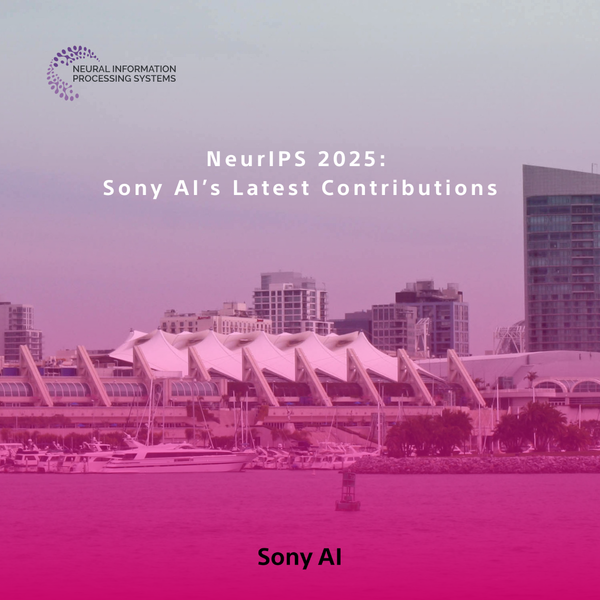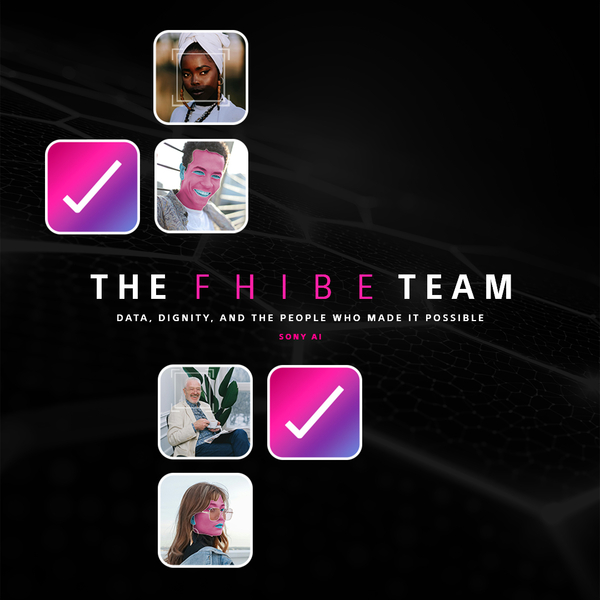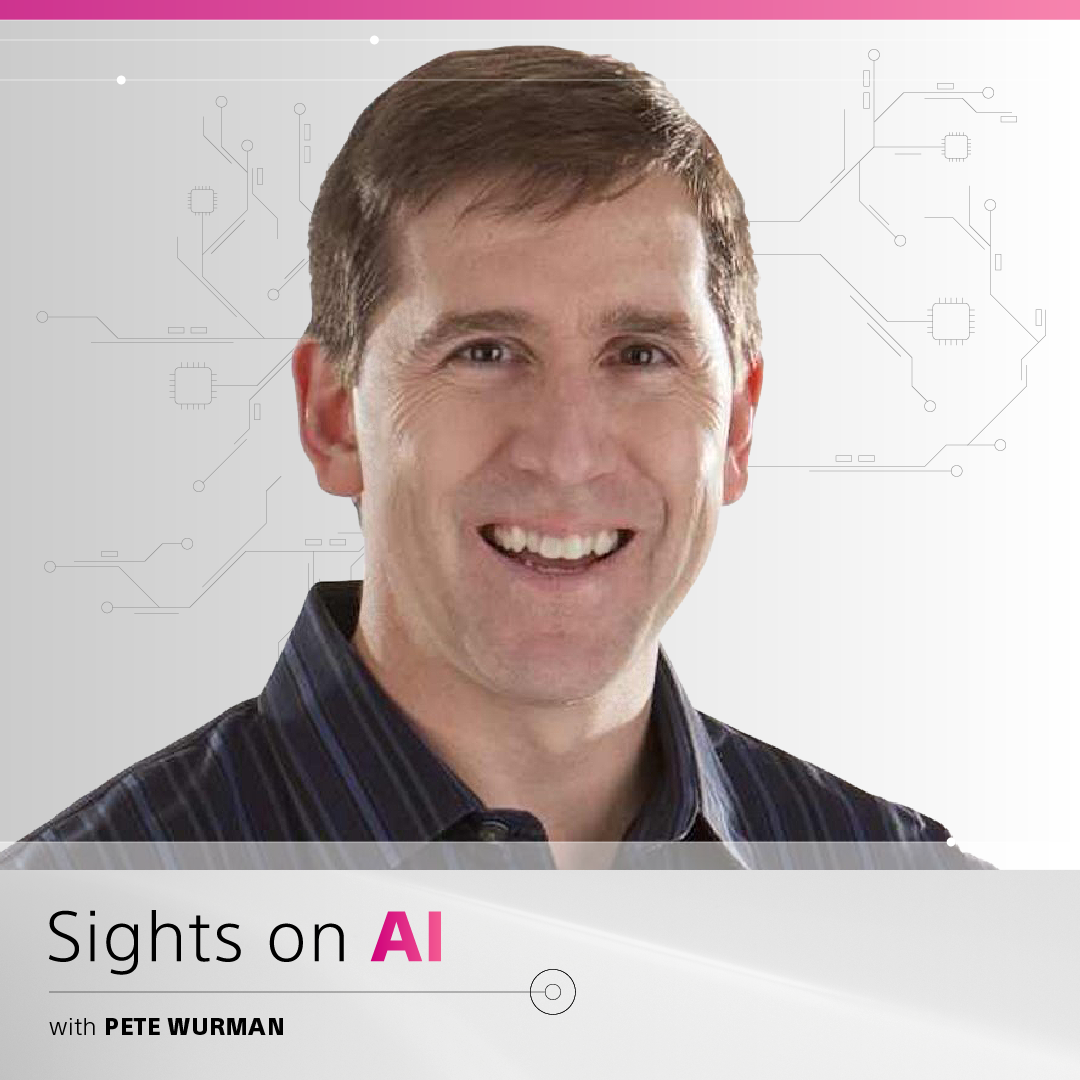Sights on AI: Pete Wurman Discusses Career in AI and How the Technology is Evolving the Gaming Landscape
Sony AI
February 5, 2025
The Sony AI team is a diverse group of individuals working to accomplish one common goal: accelerate the fundamental research and development of AI and enhance human imagination and creativity, particularly in the realm of entertainment. Each individual brings different experiences, along with a unique view of the technology, to this work. This insightful Q&A series, Sights on AI, highlights the career journeys of Sony AI’s leaders and offers their perspectives on a number of AI topics.
Peter Stone ・ Erica Kato Marcus・ Tarek Besold ・ Yuki Mitsufuji ・ Lorenzo Servadei・ Alice Xiang・ Pete Wurman
Pete Wurman is the Deputy President of Sony AI and leads the Gaming and Interactive Agents Flagship. He has been instrumental in the groundbreaking AI discoveries and development that led to the commercialization of Sony AI’s breakthrough autonomous AI agent, Gran Turismo Sophy. Pete has over 50 academic papers and 60 patents and is an IEEE Fellow and AAAI Fellow. He is also a member of the National Inventors Hall of Fame and the Logistics Hall of Fame for his work with Kiva Systems.
In this blog, Pete reflects on what led him to pursue a career in AI and how his previous work influenced his work in the Gaming and Interactive Agents Flagship at Sony AI. He explores how AI research and development in video games will evolve.
What initially sparked your interest in AI, and what led you to pursue a career in the field?
My interest in computers and technology started at 12 years old when someone in our town read an article about the Apple II release and gave it to my dad to pass along to me, as he thought I might be interested in learning more about it. I was curious – so much so that at my Bar Mitzvah, I asked if I could use the cash gifts I had received to purchase a computer. Back then, computers didn’t come with software, so you had to write your own programs, which is how I learned to code. This was not only a thrilling challenge, but also a foundational milestone that would later shape my career path.
I later pursued my undergraduate studies at MIT, with the vague ambition to major in engineering or science. MIT had an established Electrical Engineering and Computer Science (EECS) department which had an active role in advancing computing systems, such as Unix. It seemed so far removed from my little Apple II that I found it a bit intimidating. I chose to major in Mechanical Engineering instead, which aligned with my creative drive to design and build things.
When I graduated from MIT in the 1980s, job offers were hard to come by, so I decided to pursue a Master's in Mechanical Engineering at the University of Michigan. While there, I began programming for one of my professors, which eventually turned into a job developing instructional software using multimedia tools when multimedia was just taking off. In fact, our team was among the first to preview Apple’s QuickTime, their groundbreaking digital video software.
Over time, I realized I was more passionate about software engineering, so I returned to school for a Ph.D. in Computer Science. After earning my degree, I became a professor in the Computer Science Department at North Carolina State University (NC State).
In 2004, as I was up for tenure at NC State, my MIT roommate, Mick Mountz, approached me with an idea for a robotic warehouse system. Together with Raffaello D'Andrea, we co-founded Kiva Systems, a robotics company that developed mobile transport robots to store, move, and sort inventory in warehouses. We grew the company to more than 250 people and had 30 operational warehouses across the US and Europe. At that point in 2012, Amazon acquired the company.
Following the acquisition and a brief retirement, I joined Cogitai – a small AI startup focused on reinforcement learning – in 2015. This role eventually led me to Sony, where I played a key role in establishing Sony AI nearly five years ago.
You successfully launched and sold Kiva Systems to Amazon. How did your work there influence your current work at Sony AI?
My career has spanned multiple areas of AI, each requiring distinct approaches, but a consistent theme has been my approach to problem-solving. While each area requires distinct strategies, the core principle has always been to deeply understand the problem at hand, immerse myself in the environment, and iterate toward practical, scalable solutions.
At Kiva Systems, we worked to build autonomous robotic systems for warehouses. Back then, people thought the idea of reliably controlling hundreds of mobile robots at the same time was crazy. People doubted the robots could operate dependably 24 hours a day, that we could coordinate their motion effectively enough to avoid traffic jams, or that we could keep track of all of the moving inventory. Most importantly, they were skeptical that the system could constantly support operators picking an item every six seconds.
To overcome these challenges, we focused on understanding the problems our customers faced at a granular level. We embedded ourselves in warehouse environments, performed the same tasks as human workers, and iteratively tested our robotic systems to make them more efficient and easier to use.
We successfully addressed their problems by applying well-established algorithms, including AI and path planning, at a large scale. We focused on making the system robust rather than over-optimizing it, using algorithms fast enough to compute in real time and scale up to the thousands of robots needed in a warehouse. At the time, robot path planning had only been done on a small scale, so scaling it to the size we wanted to achieve changed the problem considerably. We made it work by taking practical approaches initially, and then constantly innovating to make improvements.
At Sony AI, while the algorithms and domains are different, the fundamental approach remains the same. In gaming, one of the primary challenges is understanding how to create more engaging experiences for players who are becoming increasingly sophisticated and desire to see more human-like AI agents in games. To address this, we needed to immerse ourselves in the domain.
When it came to developing Gran Turismo Sophy (GT Sophy), we had to learn all we could about not only gaming but racing simulation – and, ultimately, racing in general. This enabled us to account for changes in physics, racing dynamics, and more within our models and training.
Moving more specifically into your work with the Gaming and Interactive Agents Flagship, why do you see video games as a test bed for AI algorithms and models?
Games capture a unique subset of human intelligence. We, as humans, are the only species that creates and engages in complex games that incorporate social interaction, reasoning, strategic planning, and rule-following. As a result, games like chess have been a focus of research since the inception of computer science, and we’ve become skilled at creating programs that simulate board game-like activities.
Video games, however, present a fundamentally different challenge. Video games are full of puzzles, fine motor control challenges, and short- and long-term objectives, and players instinctively adapt on the fly and apply their common sense and strategic thinking skills as they decide how to approach them. When engaging, players have a basic understanding of physics and physical objects and how they will interact. Players also think about the fact that people designed the game, and therefore, there is a goal to be achieved and a solution to every challenge. Additionally, video games include storylines and natural language interactions that help guide players’ actions and engage them emotionally.
These are all interactions that we'd like agents and robots to do in the real world someday. Working on these challenges in a safe environment – like a video game – lets us explore these complex elements without the risks and complications of real-world robotics testing.
How do you think AI research for video games and AI in video games will evolve?
Over the years, interesting versions of open-ended, intelligent games have given us a glimpse of where technology and gaming could go. I believe this is all headed to virtual worlds where you can interact with the characters naturally, like in the real world. But, achieving this in practice will be challenging.
Many of the generative AI technologies we see today – both from the ability to generate content and dialog and keep track of prior dialog – will likely play a role in bringing these interactive stories to life. However, these technologies will not address all of the challenges. At Sony AI, we seek to explore how agents act in these virtual worlds, not just what they say. This is necessary to unlock the next level of open-ended virtual experiences.
What are some of the challenges the Gaming and Interactive Agents Flagship team is working to solve as it moves forward with new research initiatives? What is the next big thing you’re working towards?
To make AI a useful part of a game, you must make the experience of playing against an AI agent similar to competing against other players at your same level. Thus, the goal shifts from making a superhuman agent to making an agent that is fun to play with. That is challenging because there isn’t a clear definition of what it means to be “fun”. Researchers, like our team, and game creators have to come together and find that sweet spot. It is where creativity meets science.
For example, we launched GT Sophy 2.0 in November of 2023 with an update that enabled players of all levels to race against the AI agent. Our goal was to provide players with an achievable, fun racing experience, whether they were a beginner or an advanced racer. Working alongside Polyphony Digital (PDI), we focused on finding the right balance between the behaviors that GT Sophy exhibited – ensuring that it could inspire players to elevate their technique – while also demonstrating sportsmanship, finesse, and racing temperament that would make races enjoyable and challenging for everyone.
Our team is always looking for ways to enhance GT Sophy so that we can help PDI bring new and exciting features to players. Most recently, at the Gran Turismo World Series World Finals in Amsterdam this past December, we showcased exploratory research for new strategic behaviors for GT Sophy. Although there are no current plans to incorporate these new capabilities into the game, we know that players are eager to see what’s next for the AI agent. Our priority is to continue to gather feedback and conduct further research to create the best possible experience for the players when the time is right.
Outside of our work with GT Sophy, we are exploring other areas of gaming where we believe AI can significantly contribute to solving complex challenges in enhancing game experiences or non-player characters.
AI is evolving so quickly, and it is a competitive field, to say the least. How do you keep yourself inspired, and what advice would you offer others?
Working on cutting-edge AI research problems in video games is both enjoyable and demanding. But, this is also a challenging time to be a researcher because the volume of papers is unmanageable and working on the cutting edge of research requires vast resources.
To stay motivated, I encourage those entering the field to identify an aspect of AI that they find to be particularly interesting and complex. In the early part of your career, the most important thing is to learn how to do research, because over the course of your career, the particular technologies at the cutting edge will change. My research career took me from computational game theory to robotics to deep reinforcement learning. I certainly didn’t predict that arc, but I took advantage of the opportunities as they presented themselves, and did my best to keep learning along the way.
Latest Blog

December 1, 2025 | Events
NeurIPS 2025: Sony AI’s Latest Contributions
NeurIPS 2025 brings together work across Sony AI that targets real problems in real settings. The research in this roundup focuses on models that adapt under constraints, handle fr…

December 1, 2025 | Sony AI
Advancing AI: Highlights from November
November was a pivotal chapter for Sony AI, marked by the debut of our ethics project FHIBE, a consent-driven benchmark years in the making, and a trio of blogs that traced its fou…

November 7, 2025 | AI Ethics, Sony AI
The FHIBE Team: Data, Dignity, and the People Who Made It Possible
AI runs on data, but too often, that data has been scraped without consent, assembled without care, and used without accountability. The consequences ripple through our daily lives…







